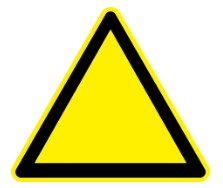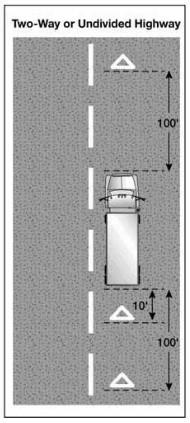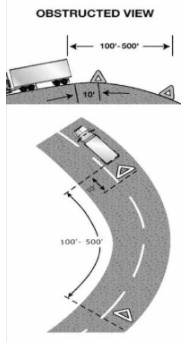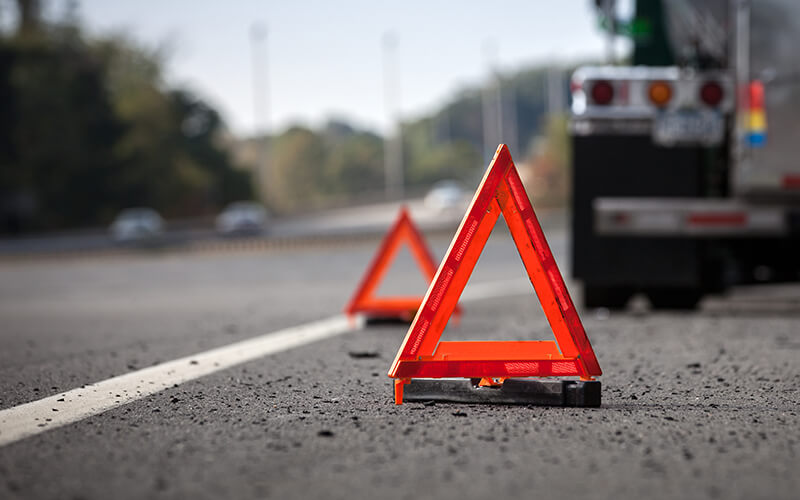Drivers who stop their vehicles on the shoulder of the traveled part of the roadway (other than for a normal traffic stop) need to minimize the risk and alert other drivers to their presence. This is done by:

- Stopping as far out of the way of other vehicles as safely as possible.
- Immediately turn on your flashers.
- Within 10 min place your emergency triangles.
If you’re in a lane of travel or on a shoulder of the highway, this is the requirement:

One triangle at 40 paces (approximately 30 meters or 100 feet) from the stopped commercial motor vehicle in the center of the traffic lane or shoulder occupied by the commercial motor vehicle and in the direction of approaching traffic; and one at 40 paces (approximately 30 meters or 100 feet) from the stopped commercial motor vehicle in the center of the traffic lane or shoulder occupied by the commercial motor vehicle and in the direction away from approaching traffic. If you stop on a 2-lane road carrying traffic in both directions or on an undivided highway, place warning devices within 10 feet of the front or rear corners to mark the location of the vehicle and 100 feet behind and ahead of the vehicle, on the shoulder or in the lane you stopped in.
If you’re stopped on a divided or one-way road:

If a commercial motor vehicle is stopped upon the traveled portion or the shoulder of a divided or one-way highway, the driver shall place the warning devices, one warning device at a distance of 200 feet one one warning device at a distance of 100 feet in a direction toward approaching traffic in the center of the lane or shoulder occupied by the commercial motor vehicle. He/she shall place one warning device at the traffic side of the commercial motor vehicle within 10 feet of the rear of the commercial motor vehicle.
If you’re stopped on a hill, curve, or near a visual obstruction:

If a commercial motor vehicle is stopped within 500 feet of a curve, the crest of a hill, or other obstruction to view, the driver shall place the warning signal in the direction of the obstruction to view a distance of 100 feet to 500 feet from the stopped commercial motor vehicle so as to afford ample warning to other users of the highway.


